
8 minute read
Vaarst: Cloud Robotics Company with Vast Opportunities
CLOUD ROBOTICS COMPANY WITH VAST OPPORTUNITIES
Vaarst, the new technology spin-off company from Rovco launched March 2021, with the stated mission to enable data to drive the future of marine robotics. Their vision being to give all offshore robotics enhanced capabilities, through artificial intelligence, machine learning and autonomy. The key to this is that they are enabling the integration of their technology into all robotic vehicles, both new and as a retrofit solution to existing ROVs.
Advertisement
ROV Planet spoke to CEO Brian Allen to get the inside track on the launch, the company’s future direction, and the considerable benefits that Vaarst’s innovative technology is bringing to the offshore industry today.
Given that Vaarst grew from its parent company Rovco, can you explain the relationship between the two?
Rovco is a service provider to the offshore sector, supplying survey and asset integrity services across the offshore infrastructure lifecycle. Vaarst provides the technology that is behind Rovco’s innovation-led services. What is significant now, is that with the launch of Vaarst we are making that technology available to all offshore robotic players.
Although Vaarst only formally launched recently, it already existed as a stealth business within Rovco, right from its initiation in 2016. By operating as an offshore services business, Rovco was functioning as the test bed for Vaarst, enabling its technology to be refined and proven in a real-world environment. In the marine sector, where clients write task plans and work orders that specify the tools and equipment to be used, it is often difficult to introduce new innovations. Therefore, as a service provider, Rovco was able to test the practical application and demonstrate the value of Vaarst technology, while building a secure trust of the technology within the customer base.
Where did the ideas behind Vaarst technology come from?
Vaarst technology was born to enable the modernisation of offshore data collection in survey and O&M work, where methods have not changed significantly for many years. This work requires the deployment of large vessels, that create surprisingly high levels of environmental pollution and cost.
Each vessel can produce up to 275K tonnes of CO2 over its lifetime, depending on the job. They can require up to 60 people to work in hazardous conditions and cost £1-10m a month to operate. We started Vaarst because we believe there is a better way, and that the solution to this industry problem is through technological innovation. From the beginning, we looked at how to do things differently. Starting our research journey, with universities across the US and Europe, to explore new methods of data collection in aerial drone technologies to see what could be applied to the offshore industry. This led us to focus on the ExoMars Rover and the technologies employed to assess landscapes. There was a clear synergy, between the problem of sending data from Mars back to Earth, and the problem of sending data from deep underwater back to shore. We knew that there were hurdles with sending video back over this distance, so this took us down the route of SLAM and using 3D data reconstruction as a compression tool. That is where it all began.
Can you tell us more about the benefits of SLAM and 3D data reconstruction?
Our SLAM product, SubSLAM X2, is an AI-driven intelligent data collection system that delivers live underwater 3D point clouds, enabling users to get highly accurate reconstructions in real-time. The model actually builds in front of your eyes as the ROV is navigating around the structure. And because the team are still on the boat while the data is being gathered, it’s possible to ensure that all the data needed has been captured during the dive. So, there’s no need for any costly rework.
Using relative positioning technology, SubSLAM ensures the vehicle always knows where it is, removing the need for any additional positioning equipment or scale bars. Although, we can also switch on the IMU for those infrequent scenarios where the visibility isn’t good.
As well as collecting 3D data, the system also captures 4K video, which can be post-processed for high-resolution photogrammetry. So, the client gets live 3D data on all their assets while on the job, and is then able to focus their attention when post-processing on creating high detail photogrammetry models for areas of greater interest.
One of the advantages of SubSLAM is live streaming. How does that work?
The compressed 3D point cloud data – captured by SubSLAM – is sufficiently small in file size (150-200 kbits/s) that it can be live-streamed back to any device in the world over a low bandwidth data link, being easily transmittable through a ship’s VSAT system. This gives remote teams access to survey and construction data in real-time, so they can make informed decisions and recommendations while the work is still taking place. While we offer this to clients today on a bespoke basis, in 3 to 6 months, this will be part of our harmonised product set, and available to all clients.
The live-streamed data will also be automatically updated to our geo-referenced data platform. This will store a historical archive of all the customer’s assets. So, employees will be able to collaborate in a smarter, safer and more efficient way. The geo-referenced data platform is also scheduled for release later this year.
Can you tell us more about the capabilities your machine learning platform?
The Vaarst ML platform takes visual data and enables it to be analysed really quickly. Put simply, ML is about multiplying the human effort of a single person, so they can do much more work.

For example, to undertake a routine check-up on a subsea pipeline, an ROV needs to travel along the pipeline to capture video footage. An operator, or more specifically – a team of operators, then analyses images manually, checking for issues and potential threats that will require action, such as free span, corrosion, debris and large rocks. One example data set we’ve worked with was approximately 120 hours in length.
With our ML solution, that data could be analysed in just 7 hours, enabling a 15 x of human effort. That ML system has now just finished trials with an oil supermajor, and they are currently looking to roll it out to their supply chain.

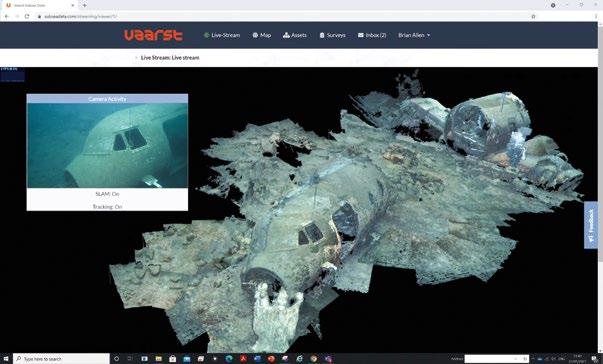
While right now our ML is delivering analysis in post-processing, our machine learning capabilities are now being integrated into SubSLAM at the edge, where the data collection is taking place. These technologies have not been combined before and create a unique and innovative much-needed solution for the offshore energy sector. In fact, there will be no need to send visual data back to shore, instead we’ll just need to transmit the answers.
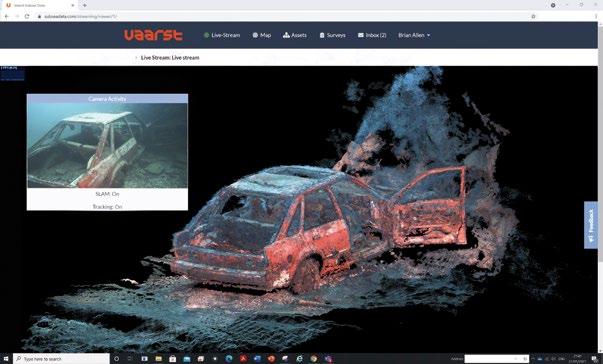
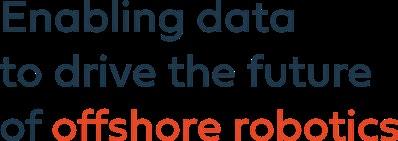
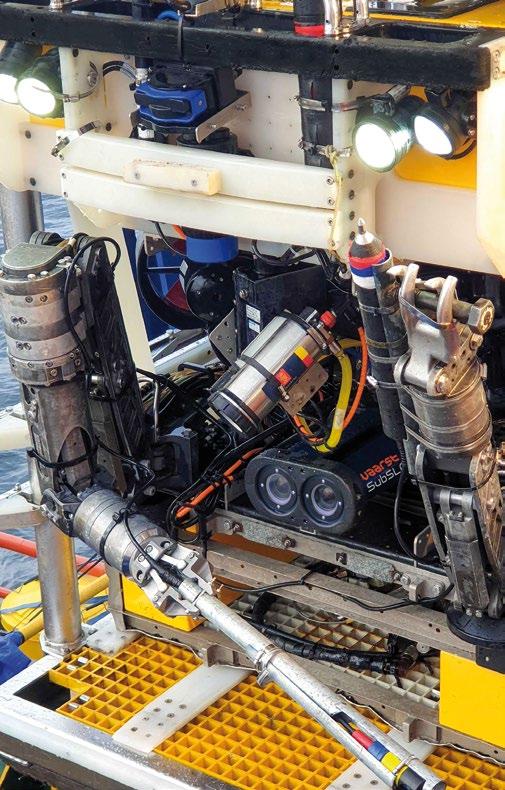
What’s the future vision for Vaarst? And what makes you different from others?
The overall challenge that Vaarst is solving is how to remove large vessels from our waters. But at the same time, we want to ensure that the replacement solution is efficient and intelligent, and not reliant on a remote operations centre to drive the robots. So, we are building a cloud robotics with true autonomy capabilities, where the purposes of the operations centre is only to monitor and supervise, and the vehicles drive themselves through their own data-driven intelligence. That is what makes us so different from other companies out there who are starting to offer remote centres. We are enabling robotic vehicles to answer key questions: where am I now? what’s around me? And where shall I go next? With the system constantly localising, learning and deciding, so that it can accurately position the vehicle in its own surroundings, predict the next move and operate without assistance.
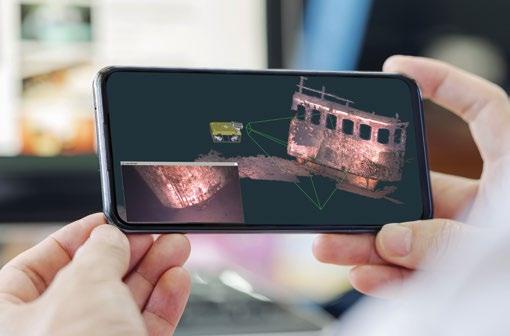
And, as I mentioned previously, we are also integrating live machine learning at the edge. This means we will deliver rapid, on-the-fly, feature detection and analysis, all while navigating autonomously at close range around complex underwater structures.
Our next step is to then take things up to yet another level, enabling multiple robots to work together as a coordinated fleet. Pair all of that with an autonomous vessel, and it enables a vast scale-up of operations through connected robotics. And ultimately the removal of many large vessels from our seas.
So, what’s the endgame?
What we have here with the individual technology components are the constituent parts of a powerful cloud robotics solution. SubSLAM sits at the edge and collects the data, machine learning analyses the data on the fly, the analysis is sent back to the shore in real-time and the data is stored on the Vaarst platform for collaborative analysis and historical comparison.
Once this is all glued together, that’s a true cloud robotics company. The separate technology modules are available, and clients coming on board now, are well placed to capitalise on what is coming very soon.
It would be absolutely true to say data is enabling the future of marine robotics.
How can customers access Vaarst technology?
Vaarst’s SubSLAM X2 is available today for retrofit to any suitable ROV, and the system has already been interfaced with several widely used vehicles. To increase accessibility, we’ve recently made SubSLAM available to license, for £36K per annum over a fixed 3-year term, or on day-rates for short-term projects.
More information Vaarst is available at www.vaarst.com or I’d welcome anyone to get directly in touch with me, Brian Allen, or Mike Gallo in my team (mike.gallo@vaarst.com).
To find out more visit www.vaarst.com











